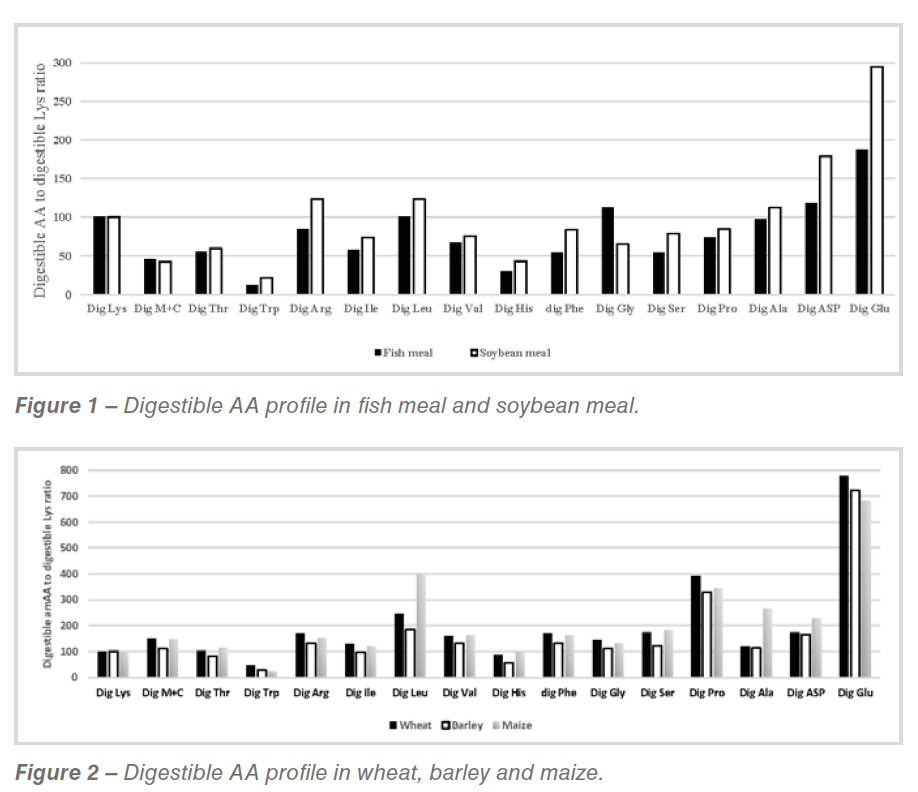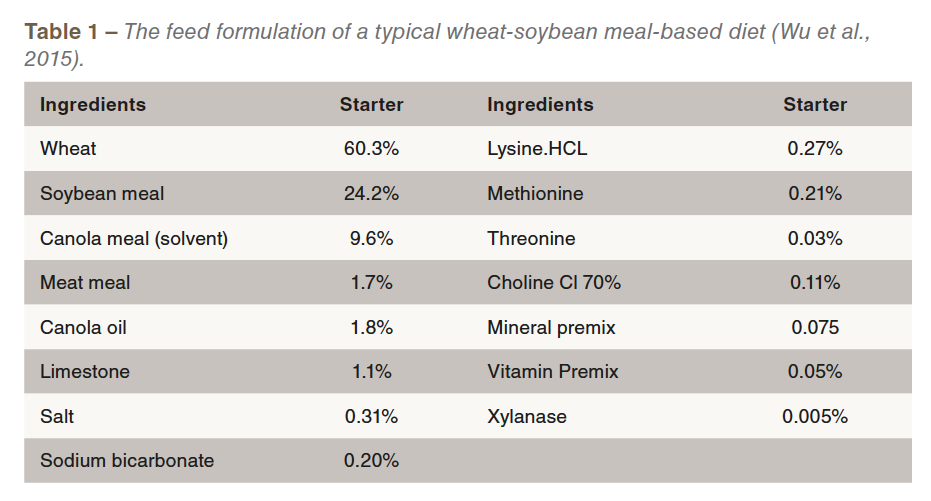
There is considerable interest in the development of low protein diets with supplemental amino acids for broiler chickens due to economic, environmental and bird welfare advantages. However, under commercial feeding conditions, chickens are exposed to challenges of infectious or non-infectious origin.
Reduced protein diets may result in amino acids being redistributed away from growth and production processes toward intestinal cells involved in immune and inflammatory responses and an unbalanced supply of amino acids in the diet can be deleterious to the chicken gut immune system.
There is considerable interest in the development of low protein diets balanced with supplemental amino acids for broiler chickens due to economic, environmental and bird welfare advantages. However, under commercial feeding conditions, chickens are exposed to various challenges of infectious and non-infectious origin. For challenges of infectious origin, even without any clinical signs of disease, animals affected by chronic subclinical disease or intestinal parasites use nutrients less efficiently for production than healthy animals. Challenges of non-infectious origin such as heat stress, mycotoxins and other anti-nutritional factors also have impacts on nutrient digestibility. Therefore, it may be necessary to set the intestinal requirements of some amino acids higher than recommended in order to avoid compromising the immune system.
It is reported that reduced protein diets may result in amino acids being redistributed away from growth and production processes, toward intestinal cells involved in immune and inflammatory responses. Further, reduced-protein diets may change amino acid availability and promote negative interactions among amino acids. In addition, an unbalanced supply of amino acids in the diet can be deleterious to the immune system. Thus, an ideal balance of AA is crucial for broiler chicken gut health in particular if birds are reared without antibiotics.
Amino acid nutrition and disturbance of intestinal function
Necrotic enteritis (NE) is a multifactorial, bacterial disease caused by Clostridium perfringens
(CP) which produces a variety of extracellular toxins and invasive enzymes in the broiler chicken gut. It is widely believed that coccidiosis, wheat or barley-based diets with a high proportion of fish meal and removal of in-feed antibiotics are major disposing factors. Due to a damaged intestinal mucosa, subclinical NE usually results in poor body weight gain associated with reduced feed intake, and it is assumed that needs for some functional amino acids for immunity will be met by mobilizing skeletal muscle protein. Compared to soybean meal, addition of fish meal might result in deficiency in arginine (Arg), leucine (Leu), isoleucine (Ile), aspartic acid (Asp), histine (His), phenylalanine (Phe) and glutamic acid (Glu) (Figure 1, adapted from Lemme et al., 2004). Compared to maize, use of wheat or barley might lead to a diet deficient in alanine (Ala), Leu and Asp (Figure 2, adapted from Lemme et al., 2004). Adding Arg has been demonstrated to reduce intestinal mucosal disruption during a coccidial challenge. Leu, Ile, Asp and Glu play vital roles in the metabolism and function of leucocytes and lymphocytes. Glutamine is important for maintaining the integrity of the gut barrier and the structure of the intestinal mucosa. Increasing total methionine levels from 0.35 to 1.2% in the diet of chickens infected with Newcastle Disease virus markedly enhanced immune responses: T-cell proliferation, plasma IgG levels, leucocyte migration and antibody titres. Furthermore, threonine (Thr), Arg and Glu may help to minimize over-activation of the innate immune system and modulate the intestinal microbiota. It is noteworthy that, although amino acids are required for the synthesis of a variety of specific proteins to sustain normal immunocompetence and protect the animal from a variety of diseases, an imbalanced supply of amino acids in the diet can be deleterious to the immune system.

Recently, in an NE challenge trial conducted at the University of New England (UNE), challenged at the age of 9 days, birds fed diets formulated with an ideal amino acids profile completely recovered at the age of 35 days Considering that the intestinal immune system is responsible for initiating and propagating responses to commensal and pathogenic microorganisms, ideal amino acids profile may play an important role in alleviating chicken gut disturbance.
Ideal AA profile for broiler chickens
The ideal AA profile, with AA in ratio to lysine, was first proposed and tested in broiler chickens by Baker and Han (1994). Because the standardized ileal digestibility (SID) values of AAs are more likely to be additive in mixed diets, most ideal AA profiles for broiler chickens are provided based on SID values. Although there are no significant differences in AA ratios to SID lys among those ideal AA profiles, dietary SID Lys concentration will have strong impact on the order of dietary limiting amino acids.
For a typical wheat-soybean meal-based diet shown in Table 1, 1.20% SID Lys was used to formulate the starter diet. Obviously, this diet perfectly matched the ideal AA profile recommended for Cobb 500 chickens (Figure 3). However, compared with the ideal AA profile recommended by Rostagno (Figure 4), almost all essential amino acids were deficient in this diet, potentially disturbing gut health of the bird.

In conclusion, an ideal AA profile in broiler chicken diets may alleviate gut disturbance. When dietary Lys concentration is increased, other essential AA concentrations also need to be increased accordingly.

From the Proceedings of the 2019 Australian Poultry Science Symposium
















